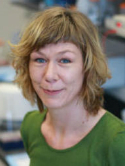Analysis of recombinants in female mouse meiosis Journal Article
| Authors: | De Boer, E.; Jasin, M.; Keeney, S. |
| Article Title: | Analysis of recombinants in female mouse meiosis |
| Abstract: | During meiosis, homologous chromosomes (homologs) undergo recombinational interactions, resulting in the formation of crossovers (COs) or noncrossovers (NCOs). Both COs and NCOs are initiated by the same event: programmed double-strand DNA breaks (DSBs), which occur preferentially at hotspots throughout the genome. COs contribute to the genetic diversity of gametes and are needed to promote proper meiotic chromosome segregation. Accordingly, their formation is tightly controlled. In the mouse, the sites of preferred CO formation differ between male and female chromosomes, both on a regional level and on the level of individual hotspots. Sperm typing using (half-sided) allele-specific PCR has proven a powerful technique to characterize COs and all detectable NCOs at hotspots on male human and mouse chromosomes. In contrast, very little is known about the properties of hotspots in female meiosis. This chapter describes an adaptation of sperm typing to analyze recombinants in a hotspot, using DNA isolated from an ovary cell suspension enriched for oocytes. © 2013 Springer Science+Business Media, LLC. |
| Keywords: | oocyte; meiosis; recombination; allele-specific pcr; crossover; hotspot; noncrossovers |
| Journal Title: | Methods in Molecular Biology |
| Volume: | 957 |
| ISSN: | 1064-3745 |
| Publisher: | Humana Press Inc |
| Date Published: | 2013-01-01 |
| Start Page: | 19 |
| End Page: | 45 |
| Language: | English |
| DOI: | 10.1007/978-1-62703-191-2_2 |
| PROVIDER: | scopus |
| PUBMED: | 23138942 |
| DOI/URL: | |
| Notes: | Chapter 2 in "Mammalian Oocyte Regulation: Methods and Protocols" (ISBN: 978-1-62703-190-5) -- Erratum issued, see DOI: 10.1007/978-1-62703-191-2_21 -- Source: Scopus |
Altmetric
Citation Impact
BMJ Impact Analytics
Related MSK Work





